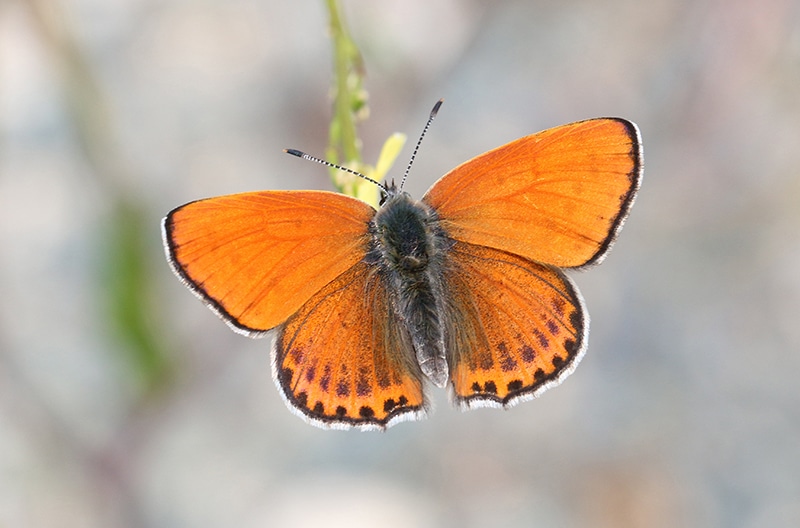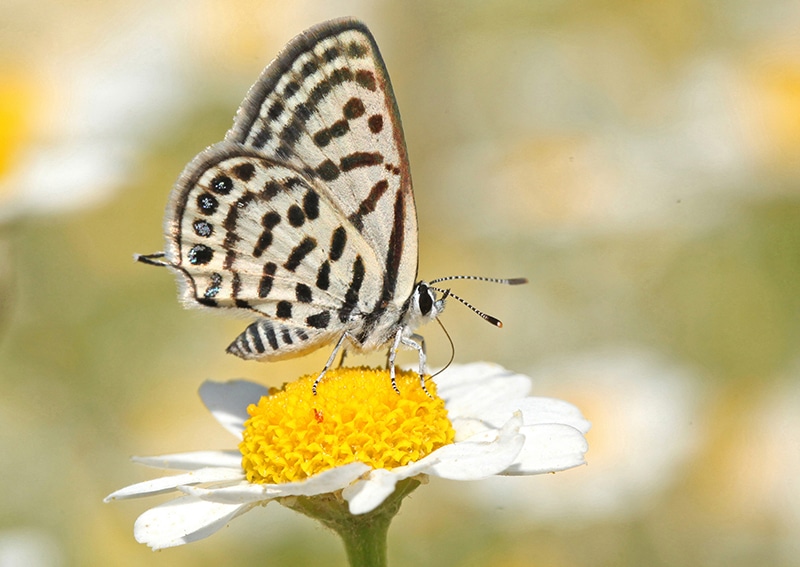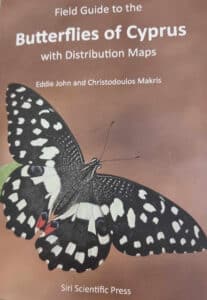From the butterfly that shouldn’t be here to the island’s newest arrival, Cyprus’ winged wonders are surprising people around the world finds ALIX NORMAN
In 2013, a gorgeous, vivid orange butterfly was photographed in a Paphos garden. It was a complete shock. This Monarch should not be here, said the experts – it simply does not exist in Cyprus! What on earth had happened?
The wider butterfly community quickly weighed in. Various (very serious) theories were postulated to explain away the appearance of this Danaus plexippus: climate change, species expansion, anthropogenic spread. But the answer was actually far more wild and wonderful than anyone could have imagined. And it fell to Eddie John, Cyprus’ foremost butterfly expert, to find the explanation…
A spot of clever investigation revealed the Monarch had also been spotted in Ibiza over the same summer – again, a place that’s not the insect’s natural habitat. But the cause wasn’t warming waters or wavering winds. It was weddings!
A Mediterranean event organiser, it transpired, had been buying up butterflies from a Spanish breeder. The insects were then shipped off to Paphos and Ibiza, where couples released them to celebrate their vows.
It was absolutely magical, said guests; the air was filled with a rainbow of butterflies… Which, of course, then flew off to the gardens of Paphos (and Ibiza). There to confound legions of local lepidopterists!

Lycaena thersamon (lesser fiery copper) photo by Eddie John
“Attractive though the concept might be, the release of alien butterflies is ill-judged,” Eddie admonishes. And he should know. A highly experienced lepidopterist, Eddie is also the co-author of the definitive book on the subject: Field Guide to the Butterflies of Cyprus.
The author’s sentiments echo those of PETA, which not only warns that butterflies transplanted to an unfamiliar environment often perish for a lack of food, but also highlights the cruelties to which the insects are subjected during transport.
“Butterfly breeders mass-produce the animals and ship them like cargo to anyone with a credit card. They’re often flattened and sealed in envelopes or tiny boxes and then shipped over long distances. Many are crushed or die from exposure before they even reach their destination.”
While Eddie doesn’t go into such detail, he’s nevertheless very clear that these wedding releases are Not A Good Thing. His sentiments are unsurprising given his love for butterflies – he’s written several books on the subject, including the weighty Butterflies of Cyprus: Field Guide and Distribution Atlas, co-authored with Christodoulos Makris, the island’s best-known entomologist.
This latest edition is more of a pocket-sized companion, a more manageable guide to the butterflies of Cyprus. And while it’s perfect for the island’s most passionate lepidopterists, it’s also a delight for brand-new butterfly buffs.

Tarucus balkanicus (little tiger blue) photo by Christodoulos Makris
For the former, it’s got everything from an exhaustive breakdown of endemic species and subspecies to phenology, hostplant data, and detailed distribution maps that tell you exactly where you’ll find which species and when. Basically, all the info you’ll need to set off on an exciting butterfly spotting expedition.
On the other hand, if you honestly can’t tell a Skipper from a Swallowtail but can’t wait to ascertain which species settled on your sage, you can flick straight to the photos (courtesy of various wildlife photographers, including both authors). There are at least two detailed pictures of every possible island butterfly, and they certainly make for lovely viewing.
So too do the names! For anyone whose knowledge of butterflies extends no further than the Red Admiral, the names of Cyprus’ butterflies read like Dungeons and Dragons archetypes: you can almost imagine the Hermit, Eastern Festoon, Small Desert Blue, and Levantine Leopard all setting out on a quest together! Who knew that insects could enjoy such exotic nomenclature?
There’s also a fabulous section on new and potential additions to the list of local butterflies. “For a variety of reasons, including possible range expansion, migration or accidental introduction, the Cyprus list has seen numerous changes over the years,” writes the author.
The latest addition to the list of Cyprus species is the Caper White, a butterfly that appeared in 2023 for the very first time, making it into this book by the very skin of its proboscis!

“The dark veining of the Caper White’s wings attracted immediate attention,” writes Eddie in excitement. “Over the next 5 minutes, the butterfly was seen to fly for short distances of about 3 metres keeping close to the ground but with no obvious signs of nectaring. This species,” he adds, “was one of a number predicted in John & Makris 2022 to make an appearance on the island, and brings the number of butterfly species recorded in Cyprus to 57!”
Granted, 57 is hardly comparable to the 450 butterfly species of Australia, the 1,317 found in China, or the staggering 3,642 of Colombia (of which 200 are found nowhere else on the planet!). But then Cyprus is relatively small. And, in fact, if you compare the number of species by size of country, our island actually boasts more butterfly species per square kilometre than even Colombia!
These 57 species can be divided into five families: the Nymphalidae (the most numerous, with 22 species ranging from the African Queen to the Two-Tailed Pasha); the 17 Lycaenidae (including the oddly-named Pomegranate and Purple Hairstreaks!); 11 Pieridae (from the Orange Tip to the Clouded Yellow); four Hesperiidae (all variations of the Skipper); and just three Papilionidae (two Swallowtails and the aforementioned Festoon).
Sadly, the one species you won’t find listed in this fascinating book as an endemic species (well, for the time being at any rate) is the Danaus plexippus. You may spot one on a Paphos plant, or even see a cloud flutter by if there happens to be a wedding in the area. But, for the moment, this gorgeous Monarch butterfly is plexippus non grata in Cyprus!
The Guide is available from various bookstores, as well as through amazon.co.uk. For more information, visit www.cyprusbutterflies.co.uk







Click here to change your cookie preferences